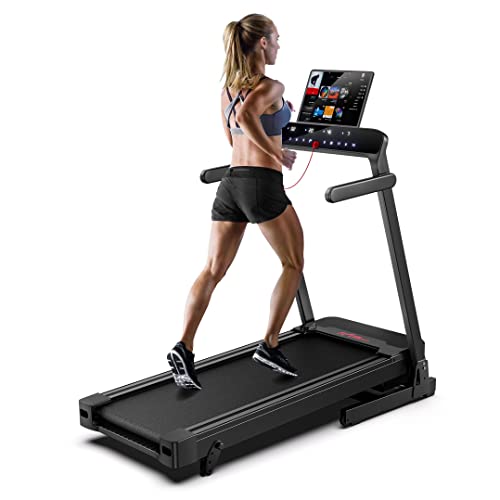The Rise of Non-Electric Running Machines: A Sustainable Approach to Home Fitness
Over the last few years, the physical fitness market has actually seen a considerable shift towards sustainable and energy-efficient equipment. Among the wide variety of options, non-electric running machines have carved out a niche on their own, appealing to physical fitness enthusiasts who value eco-friendliness, performance, and cost-effectiveness. This short article explores the benefits of non-electric running makers, compares them with their electric counterparts, and responses often asked questions about these ingenious physical fitness tools.
What is a Non-Electric Running Machine?
A non-electric running machine, typically described as a manual treadmill, is a piece of exercise equipment that allows users to stroll or run without the requirement for electricity. Instead of counting on one-time offer , these machines utilize the user's own physical effort to move the running belt. This feature not just makes them eco-friendly however likewise encourages a more natural and appealing workout experience.
Key Features of Non-Electric Running Machines
| Function | Description |
|---|---|
| Self-Powered | Runs without electricity; users power the treadmill through their motions. |
| Adjustable Incline | Many designs provide incline settings to improve workout intensity. |
| Compact Design | Generally lighter and more space-efficient than electric treadmills. |
| Low Maintenance | Fewer electronic components means easier upkeep and durability. |
| Toughness | Developed with robust products to withstand extreme use; frequently more rugged than electric designs. |
Benefits of Non-Electric Running Machines
1. Eco-Friendly
Being self-powered, non-electric running machines do not add to carbon emissions or energy consumption. For ecologically conscious consumers, this aspect lines up with a way of life that prioritizes sustainability.
2. Economical
Without the requirement for electricity, users can save cash in the long run, both in terms of energy expenses and the expense of maintenance. The lack of complicated electronic devices implies less probability of malfunction, possibly saving money on repairs.
3. Engagement and Intensity
Due to the manual nature of operation, users engage more muscles during the exercise. This can result in a more extreme cardiovascular workout, as the effort is completely dictated by the user's speed and force.
4. Versatility
Non-electric running devices are ideal for various exercises, from light running to high-intensity period training (HIIT). In addition, numerous designs allow users to change the incline, which can assist target various muscle groups and improve exercise efficiency.
5. Noise-Free Operation
Unlike electric treadmills that may have motors running, non-electric makers work quietly, making them ideal for home usage where sound might be a concern.
Contrast: Non-Electric vs. Electric Running Machines
To offer a clearer understanding, the table listed below compares the main functions of non-electric and electric running machines:
| Feature | Non-Electric Running Machines | Electric Running Machines |
|---|---|---|
| Power Source | Manual (user-powered) | Electric (motor-driven) |
| Noise Level | Quiet | Can be loud due to the motor |
| Space Requirement | Frequently more compact | Can be bulkier due to the motor |
| User Control | Total control over rate and strength | Speed and incline settings adjusted digitally |
| Upkeep | Low, primarily mechanical checks | Greater, due to electrical elements |
| Initial Cost | Generally lower | Generally greater price point |
Choosing the Right Non-Electric Running Machine
When selecting a non-electric running machine, prospective buyers need to consider several factors:
Key Considerations
- Material Quality: Look for devices developed with durable parts that can hold up against routine use.
- Weight Capacity: Check the weight restricts to ensure it can accommodate all intended users.
- Adjustable Features: Opt for designs that offer adjustable inclines and other personalized settings to boost exercise variety.
- Footprint Size: Ensure the machine fits easily in your designated workout location.
- User Reviews: Research feedback from other buyers to determine reliability and performance.
Popular Non-Electric Running Machines
Here are some well-regarded non-electric running devices offered in the market:
- AssaultFitness AirRunner: Known for its durable construct and adaptability for different exercises.
- TrueForm Runner: Offers an unique curved style for a more natural running experience.
- Woodway 4Front: High on resilience and includes a distinct slat belt for smooth operation.
- XGear Fitness Manual Treadmill: Budget-friendly with adjustable incline alternatives.
- Sunny Health & & Fitness Manual Treadmill: Compact and simple to use for novices.
Frequently Asked Questions About Non-Electric Running Machines
Q1: Are non-electric running machines appropriate for novices?
A1: Yes, non-electric running makers can be ideal for beginners. Users can control their pace quickly and slowly increase their intensity as their fitness levels enhance.
Q2: How do I maintain a non-electric running machine?
A2: Maintenance usually involves checking belt tension, oiling the moving parts, and guaranteeing that all elements are protected. This is usually less requiring than preserving electric treadmills.
Q3: Can I carry out high-intensity exercises on a non-electric running machine?
A3: Absolutely! Non-electric machines are ideal for high-intensity workouts, as they rely exclusively on the user's effort, which can quickly be ramped up.
Q4: Are non-electric running machines appropriate for all physique?
A4: Most non-electric running makers can accommodate a variety of body types, but it's vital to inspect the particular weight limit and dimensions of each design.
Q5: Do non-electric running machines need any setup?
A5: Most non-electric running makers need very little setup, and some may be all set to use ideal out of package.
Non-electric running devices offer an engaging alternative to traditional electric treadmills, weding sustainability with effective exercise options. As fitness enthusiasts become more mindful of their environmental effect, these devices are likely to increase in popularity. With their myriad benefits and differed alternatives, non-electric running makers can seamlessly suit a health-oriented way of life, making them a beneficial consideration for anyone seeking to improve their physical fitness journey.

